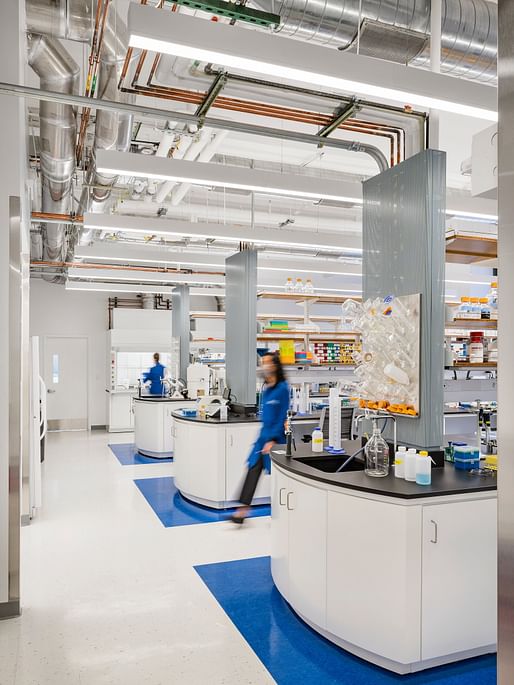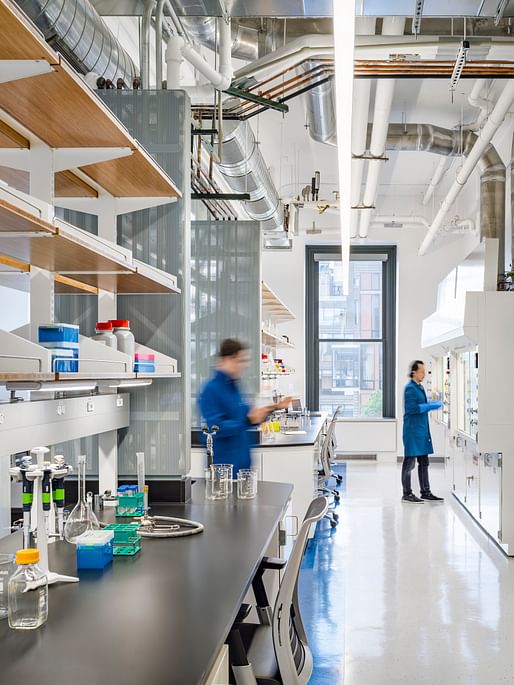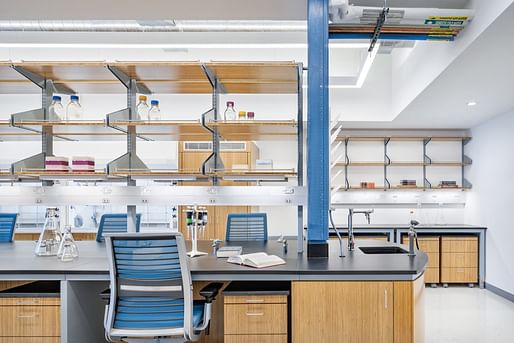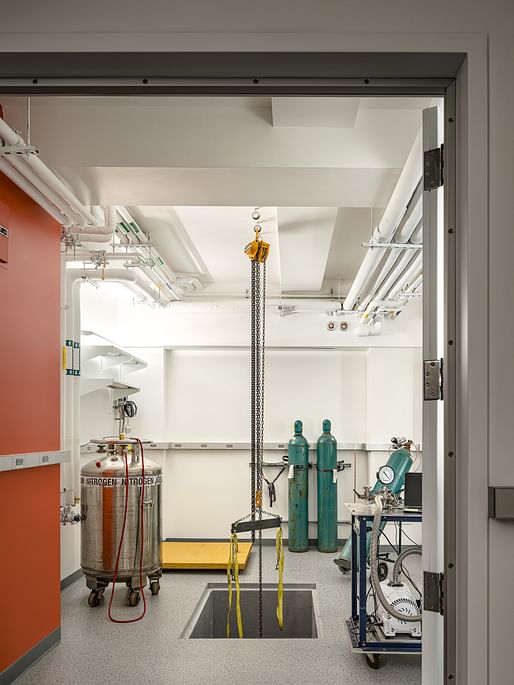
Shakespeare, Gordon, Vlado: Architects (SGVA) has completed a series of research laboratories for Columbia University. Initiated in 2018, the project aimed to “modernize and repurpose” Columbia’s existing facilities to accommodate the expanding needs of the university's biological sciences, chemistry, and physics departments.
The three projects centered on a chemistry lab at Havemeyer Hall, a biochemistry lab at Fairchild Center, and a physics lab at Pupin Hall. Each laboratory project involved the complete renovation of the existing spaces along with “innovative design concepts to facilitate the new and future goals for scientists and their teams in advancing their research.”

Havemeyer Hall's chemistry lab was transformed into a state-of-the-art 2,800 square-foot research facility, outfitted with a Biosafety level 2 tissue culture room, cold rooms, bench space, fume hoods, and a selection of other scientific equipment. The design capitalized on the tall ceiling height and natural light of the historic building, resulting in an efficient and comfortable workspace.
Details, such as the rounded benches and placement of writing tables at the windows, were considered to enhance comfort and utility, supported by a material palette of blue and white that the team describes as “calming and simple.”

At the Fairchild Center Biochemistry Lab, the firm engaged in a complete overhaul of an existing lab and support spaces to cater to molecular biology, microscopy, and chemistry research. Upgrades were made to the finishes, lighting, utility connections, and HVAC infrastructure. “The selection of materials honors the high modernist appeal of the building’s original design while improving lighting and surface areas for research,” SGVA explained.

Meanwhile, the Physics Lab at Pupin Hall underwent a major expansion and modernization of its cellar-level research facility. The original building was constructed in 1927 and is now a designated historic landmark for its role as the home of the Manhattan Project.

The renovations to the historic building were designed to accommodate a new laser system and two experimental stations, requiring subsurface imaging and a unique concrete wall design to prevent interference with the scanning technology. The upgraded lab also features bright lighting and a bold color scheme that enhances the atmosphere of the cellar-level space.
Are you sure you want to block this user and hide all related comments throughout the site?
No Comments
Archinect
This is your first comment on Archinect. Your comment will be visible once approved.